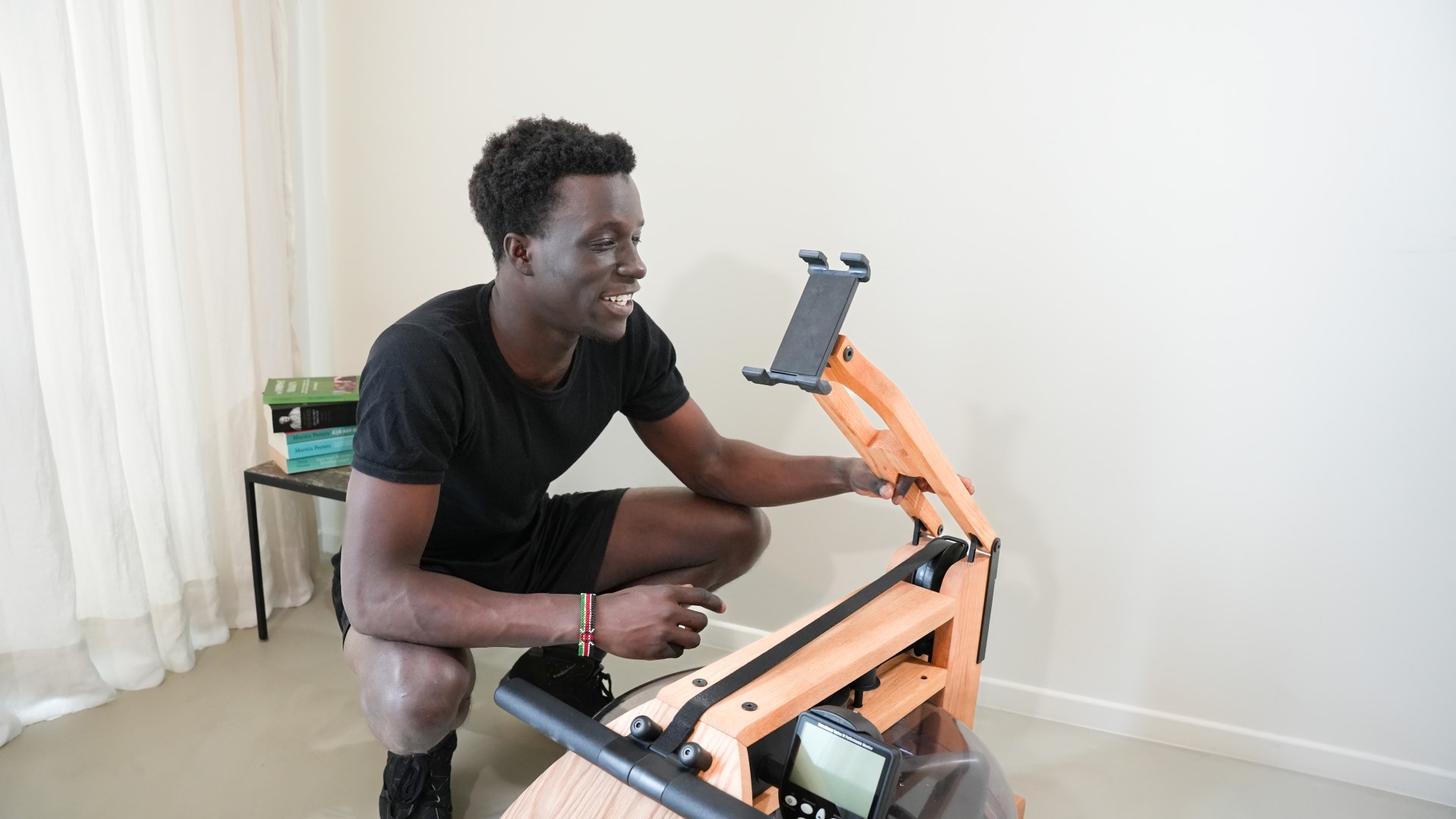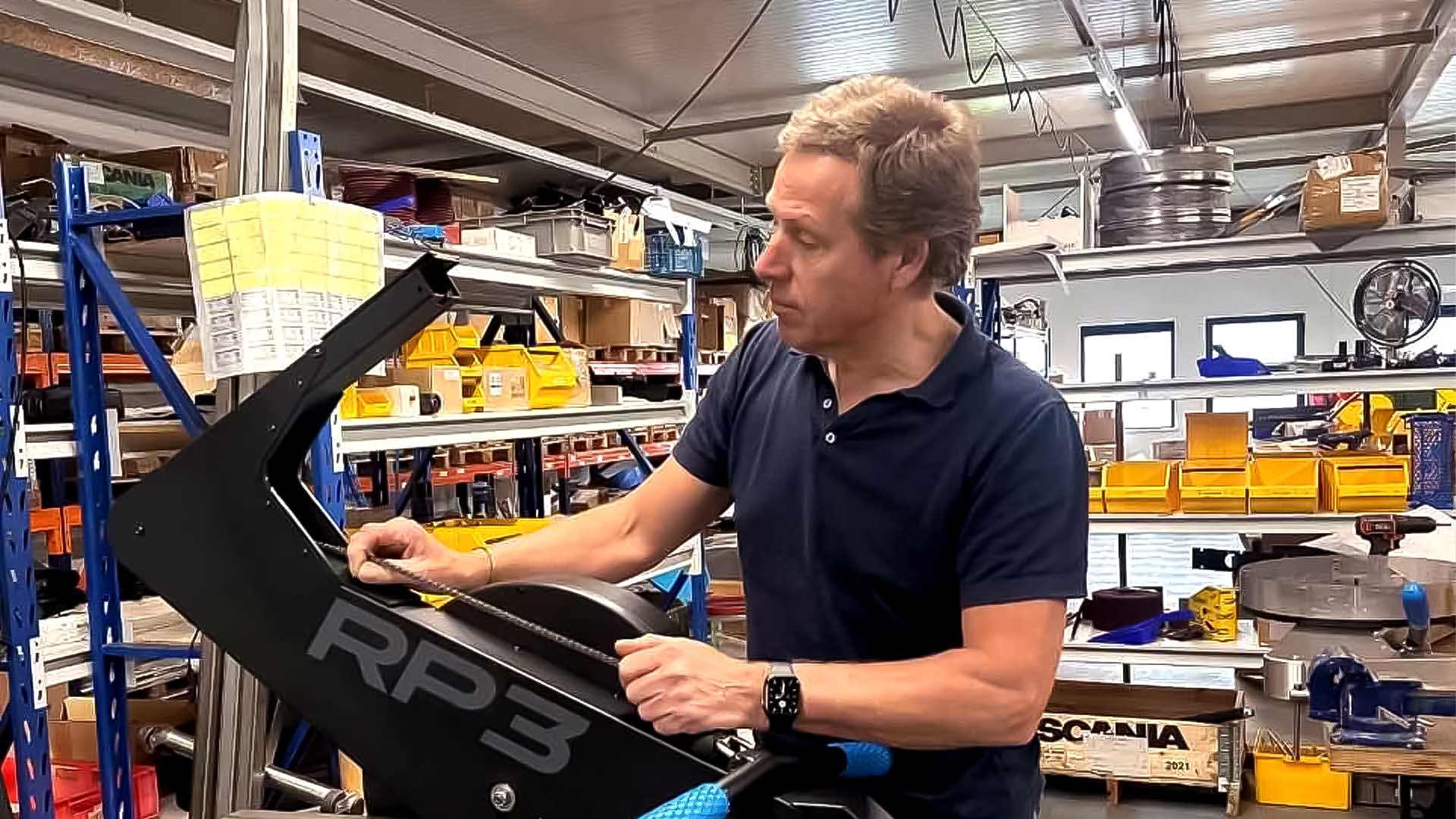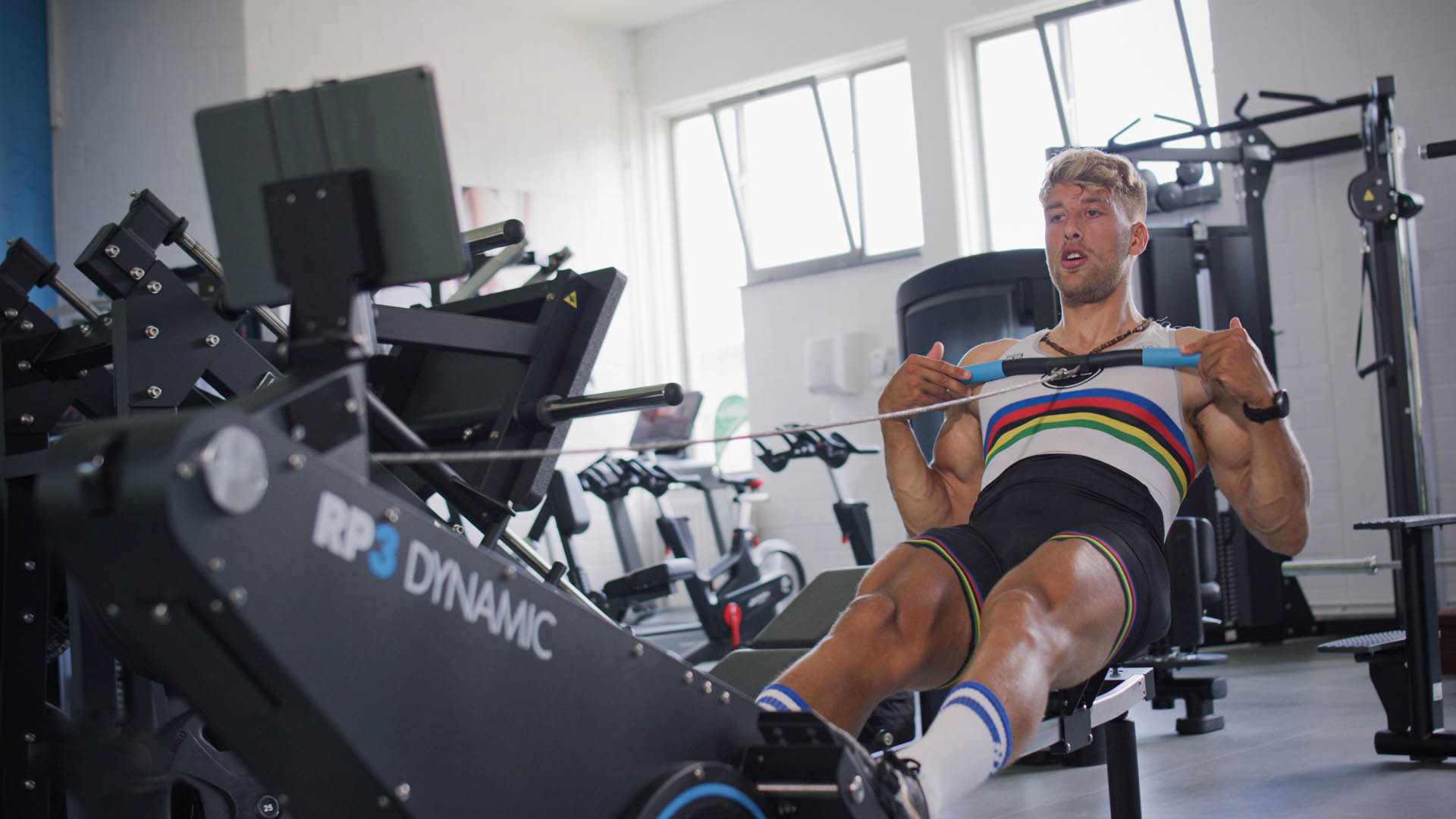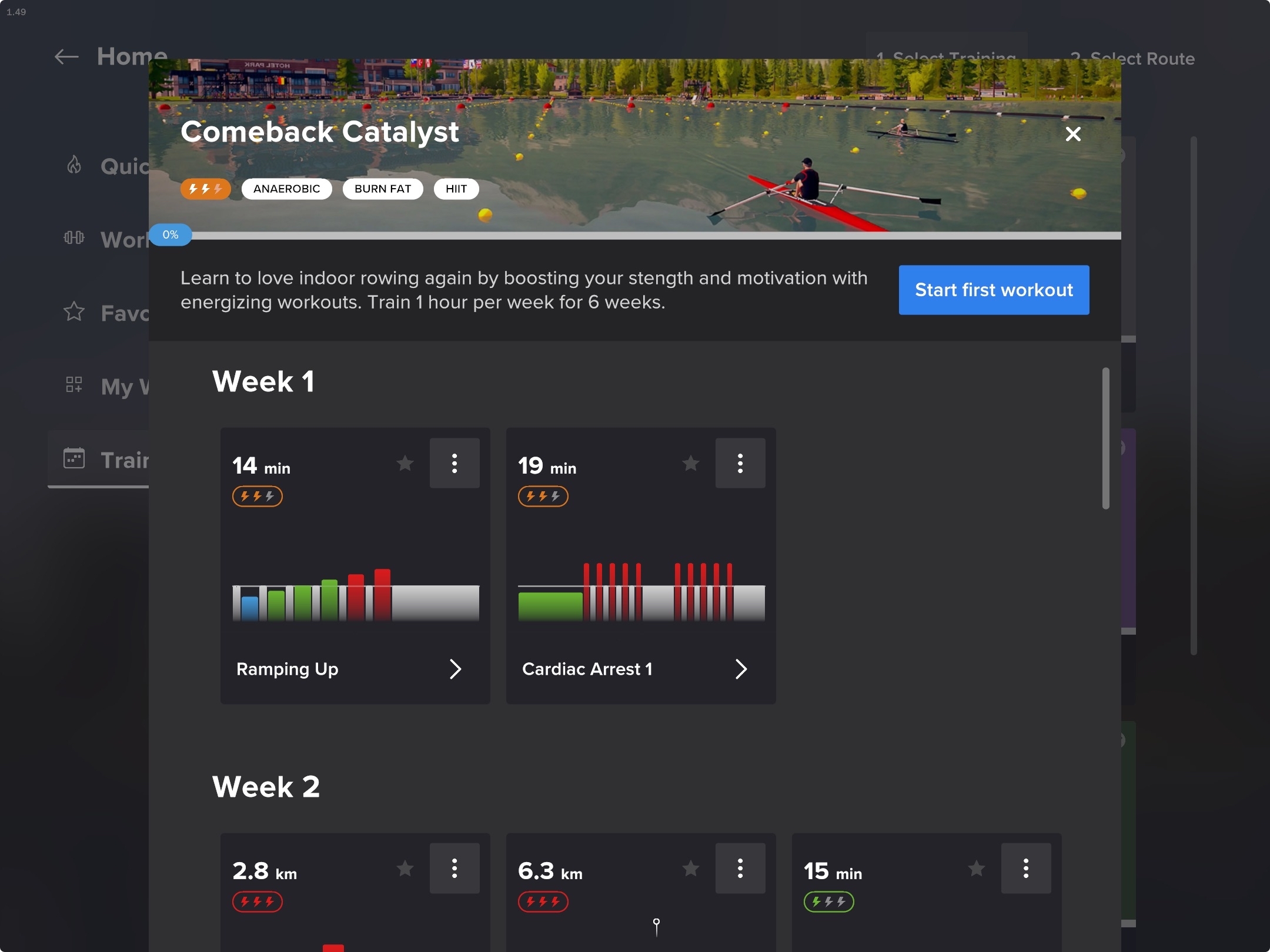Indoor Rowing Prep Guide: 4 Must-Do’s Before Returning to The Rower

read
The seasons change and so does your training routine: while you’re taking a break from the boats and bikes, the indoor rowing machine returns as your trusted training tool. Don’t miss out on 4 important things to do before your indoor rowing workout to start strong into the new season!
1. Check and clean your rowing machine
Your rowing machine has likely been collecting dust and needs a check-up from months of inactivity. Before jumping back into training, it’s important to clean it according to your user manual. Wiping down the frame, checking the moving parts, and ensuring everything is in good working order will not only extend the life of your rower, but also make your workouts safer and more efficient.

How to check and clean your rowing machine:
- Frame, seat and handle: Wipe down the frame, seat, and handles with a bit of soapy water and dry with a cloth.
- Water tank: Add a purification tablet to clear the water from discoloration and refill the tank if the water level is too low.
- Flywheel: Open the flywheel case to dedust it with a vacuum clearer or cloth.
- Bolts, nuts and screws: Tighten all fasteners.
- Chain: Lubricate with oil and remove all excess with a cloth.
- Slide and rails: Remove any debris by wiping it down with a cloth.
2. Rehearse and improve your indoor rowing technique
Your rowing technique may have gotten a bit rusty. It’s important to check on your form to ensure safe and efficient workouts. Review your rowing form by taking a video of yourself or placing a mirror next to you.
How to check your indoor rowing technique:
- The Catch: Are your arms straight, your shoulders in front of your hips and you don’t hunch?
- The Drive: Do you first stretch your legs to create power and then pull the handle to your chest?
- The Finish: Do you engage your core when leaning back and are your wrists flat?
- The Recovery: Do your hands clear your knees before leaning forwards?
Alternatively, you can send a video of your rowing form to John from RowAlong for a professional rowing technique check-up!
3. Take an FTP test to determine your baseline fitness
How strong are you starting into the new indoor rowing season? Your FTP score will indicate how fit you are! FTP stands for Functional Threshold Power and is key for tracking your fitness journey. It is primarily used in cycling but can also be applied to (indoor) rowing. Take an FTP to get to know your maximum power output over 1 hour. But don’t worry: to lower the physical and mental demands, you can choose to take a ramp test or a 20-minute FTP test.

Exercising below FTP builds endurance, while training above it improves your power and speed. Test your indoor rowing FTP for free in the EXR app, train your pacing and find out about your baseline fitness. Taking an FTP-test periodically also helps with tracking your long-term progress as comparing your starting value to your performance at the end of the season gives a clear indication of your gains.
4. Follow a plan to fall in love with indoor rowing again
Finding back into a fitness routine is easy when you follow a structured plan. Its clear structure removes guesswork, keeps you accountable, and ensures every workout serves a purpose. Plus, the accomplished feeling when completing a plan is unbeatable!

In EXR, follow the Comeback Catalyst Training Plan. It is based on your FTP-score, meaning it takes your current fitness level into consideration. This particular indoor rowing plan boosts your strength and motivation by inviting you to row about one hour per week for six weeks.
Find out about your FTP-score and follow guided training plans on EXR!
Download EXR